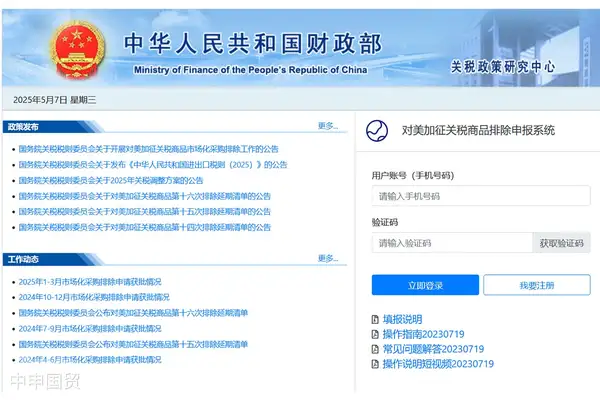- Shanghai Zhongshen International Trade Co., Ltd. - Two decades of trade agency expertise.
- Service Hotline: 139 1787 2118
Dutch semiconductor equipment giant ASML Holdings firmly maintained its mid-term targets for fiscal year 2030 (ending December 2030) in its latest earnings forecast released on November 14. This decision is particularly noteworthy given the current complex and volatile global trade environment, especially with the potential return of former U.S. President Donald Trump to the White House and possible stricter export controls on China. Despite uncertainties, ASML remains optimistic about its revenue prospects, projecting fiscal year 2030 revenue to reach €44-60 billion, more than double current expectations.

ASML CEO Christopher F. A. Chris Kuijk emphasized at the Investor Day event in Eindhoven, southern Netherlands, that AI will further activate industries. He noted that the rapid development of artificial intelligence (AI) is one of the biggest changes in the semiconductor industry over the past two years, which is a key reason for ASMLs unchanged long-term targets. Since U.S. startup OpenAI launched the conversational AI ChatGPT in November 2022, AI applications and demand have significantly increased, further driving demand for advanced semiconductor equipment.
ASMLs fiscal year 2030 forecast marks its first major earnings update in a year. Despite rapidly changing market conditions, ASMLs decision to stick to its original targets demonstrates confidence in future market development. The company expects fiscal year 2024 revenue to reach approximately €28 billion, with fiscal year 2030 targets set at €44-60 billion and gross margins maintained between 56% and 60%. This ambitious target reflects ASMLs anticipation of AI technology driving the semiconductor industry over the next decade.
Kuijk further elaborated on ASMLs strategic plans and market expectations at the event. He stated that ASML has long been committed to advancing AI-related semiconductor technologies, particularly mass-producing the most advanced extreme ultraviolet (EUV) lithography equipment. EUV lithography machines are critical tools for manufacturing 7nm and more advanced process chips, which are widely used in AI accelerators and graphics processing units (GPUs), essential for enhancing AI computing power. ASML emphasized that as AI technology progresses, demand for EUV lithography equipment will continue to grow, becoming a key driver of the companys business growth.
Despite ASMLs confidence in AIs growth potential, its operations face multiple risks, particularly challenges from the Chinese market. Following U.S. government requirements, the Dutch government has restricted exports of high-end semiconductor manufacturing equipment, including EUV lithography machines, to China. Potential policy escalation, especially if Trump is re-elected and further strengthens export controls on China, adds significant pressure to ASMLs Chinese business.
Data shows that ASMLs equipment sales to China accounted for 47% of total sales from July to September 2024, a significant increase from 15% two years ago. Berenberg Bank analyst Tammy Qiu noted, The Chinese market, where new semiconductor manufacturers are emerging, has seen special demand, reflecting Chinas rapid rise in the semiconductor industry and strong demand for high-end equipment. However, this sales ratio to China is expected to drop to around 20% in fiscal year 2025. Besides escalating U.S.-China trade tensions, Chinas economic slowdown is also a contributing factor.
At the investor event, ASML barely mentioned its Chinese business, indicating foresight about potential market changes. Analysts believe ASML anticipates the special demand from China will gradually shrink, returning to levels seen two years ago by fiscal year 2025. Nevertheless, with reduced special demand leading to lower revenue, ASMLs goal of doubling revenue by 2030 remains challenging.
From the perspective of AI semiconductor manufacturing equipment, competition will intensify. Currently, the most advanced 3nm and planned 2nm chips rely on ASMLs EUV lithography equipment. However, ASMLs competitors are actively developing new technologies to narrow the gap in high-end equipment. This means ASML must continue innovating to maintain its leading position in the AI-driven semiconductor market.
Additionally, ASML announced declining new orders and lowered fiscal year 2025 targets in mid-October 2024, showing the company is already addressing operational risks. Despite this, ASML remains optimistic about its long-term outlook, believing AI will continue driving semiconductor industry growth and demand for high-end manufacturing equipment.
ASMLs strategy also includes strengthening collaboration with global tech leaders to drive innovation and industry upgrades, addressing increasingly complex market conditions and policy changes. The company is actively seeking partnerships in other regions to diversify its supply chain, reduce reliance on single markets, and enhance overall risk resilience.
In the global semiconductor supply chain, ASMLs position is irreplaceable, with its EUV lithography equipment being among the worlds most advanced semiconductor manufacturing tools. As AI technology proliferates, demand for ASMLs equipment is expected to grow. However, the company must balance technological leadership with flexibility to address global policy and economic challenges to achieve its ambitious 2030 targets.
In summary, ASML Holdings maintains confidence and optimism about the future despite potential export control risks and market changes. By adhering to long-term targets and leveraging AI technology, the company aims to retain its leading position in the global semiconductor manufacturing equipment market. Although challenges remain, ASMLs strategic plans and market expectations suggest significant business growth and market expansion over the next decade.
Related Recommendations
? 2025. All Rights Reserved. Shanghai ICP No. 2023007705-2  PSB Record: Shanghai No.31011502009912
PSB Record: Shanghai No.31011502009912










